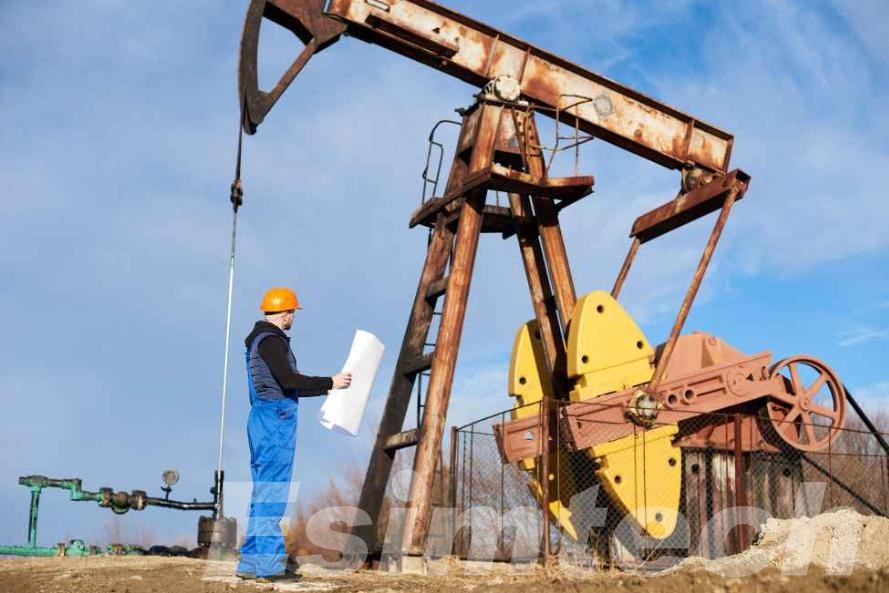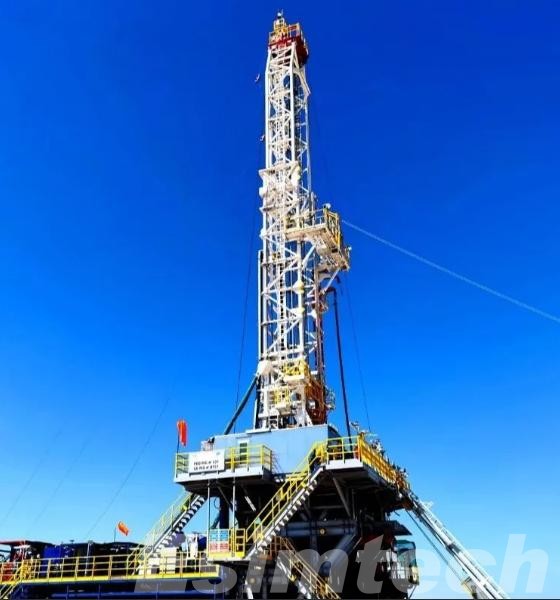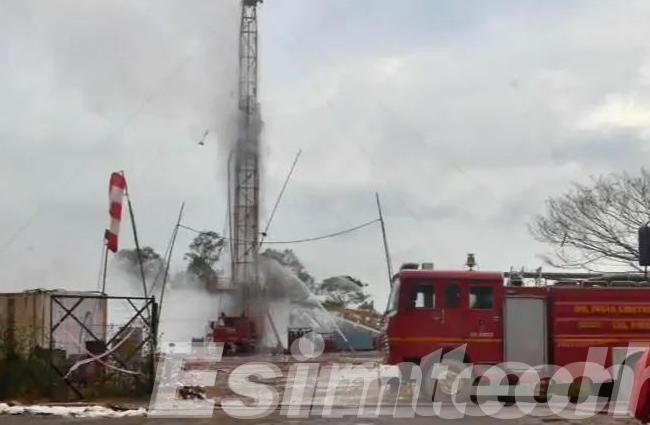Drilling Automation vs. Manual Drilling: Which is More Cost-Effective for the Petroleum Industry
Traditionally, oil and gas drilling operations have been carried out manually, relying on skilled workers to operate the necessary equipment. However, with advancements in technology, drilling automation has emerged as a viable alternative. In this blog, we’ll explore the differences between drilling automation and manual drilling, the factors influencing drilling costs, and how to choose the best approach for your drilling operation.
What is Drilling Automation and Manual Drilling?
Manual Drilling

Manual drilling is the conventional method of operating drilling rigs, where human operators directly control the equipment and manage the drilling process. This involves tasks like adjusting drilling parameters, monitoring the machinery, and making real-time decisions based on site conditions. Although manual drilling has been a core practice in the petroleum industry for many years, it tends to be slower and susceptible to human errors, fatigue, and inefficiencies. Additionally, it requires a sizable workforce to ensure safe and effective operations.
Drilling Automation

Drilling automation leverages advanced technologies to reduce the need for direct human intervention during drilling operations. Automated systems use robotics, sensors, and data analytics to monitor and control various aspects of the drilling process, such as speed, pressure, and depth. These systems adjust operations in real time, optimizing performance and minimizing errors. Automation aims to increase drilling efficiency, improve precision, and reduce the risks and costs associated with manual labor. While it requires a significant initial investment, the goal of drilling automation is to streamline operations and drive long-term cost savings.
Factors Affecting Cost in Drilling Operations
The cost of drilling operations is influenced by various factors, each playing a crucial role in determining the overall expenditure. Whether opting for manual or automated drilling, understanding these cost drivers is essential for optimizing drilling performance and reducing financial burdens:
- Labor Costs: Manual drilling requires a large workforce to operate machinery, ensure safety, and manage daily operations. This includes skilled workers, supervisors, and safety personnel. Labor costs can escalate quickly due to the number of workers needed and their training requirements. Automation, however, reduces the dependence on a large workforce, lowering ongoing labor expenses.
- Equipment and Maintenance: Both manual and automated drilling require substantial investment in equipment, but automated systems typically involve specialized machinery and advanced technology. Although the upfront costs of automation are higher, they can result in lower long-term maintenance expenses, as automated systems are often capable of predicting maintenance needs, which helps minimize downtime.
- Energy Consumption: Drilling is energy-intensive, and inefficient operation can lead to higher energy costs. Automation allows for more precise control over drilling parameters, optimizing energy usage and potentially reducing fuel consumption. Manual drilling can lead to less efficient energy use due to the variability in human-controlled processes.
- Operational Efficiency: Automation typically increases efficiency by optimizing drilling operations in real time, reducing non-productive time and increasing productivity. Manual drilling, while effective, can be slower and prone to human error, leading to potential delays and higher overall costs.
- Safety and Risk Management: Manual drilling carries a higher risk of safety incidents, which can lead to costly insurance claims, equipment damage, and downtime. In contrast, automated systems minimize human exposure to hazardous tasks, reducing the likelihood of accidents and lowering related costs, such as insurance premiums and compensation claims.
Drilling Automation vs. Manual Drilling
When evaluating the cost-effectiveness of drilling automation versus manual drilling, it’s important to look at several factors, including upfront costs, labor requirements, efficiency, and safety. Below is a detailed comparison of the two methods in terms of these factors.

| Factor | Manual Drilling | Drilling Automation |
| Initial Investment | Low upfront cost. The technology and equipment are typically less expensive than automated systems. | High initial investment in automated rigs, sensors, and software. |
| Labor Costs | High labor costs due to the need for a large crew to operate the equipment and manage safety. | Lower labor costs because fewer personnel are needed to monitor and operate the automated systems. |
| Operational Efficiency | Less efficient due to human errors, slower decision-making, and physical limitations. | Highly efficient with continuous real-time data monitoring and optimization, leading to reduced non-productive time. |
| Maintenance | Requires regular manual maintenance and repair of equipment, potentially leading to more downtime. | Predictive maintenance enabled by data analytics can reduce unplanned downtime and extend equipment life. |
| Safety | Higher risk of accidents and injuries due to human involvement in hazardous tasks. | Lower safety risks since automated systems can handle dangerous tasks, reducing the need for human intervention in high-risk areas. |
| Productivity | Lower productivity due to the manual operation of machinery and decision-making delays. | Higher productivity, as automation can continuously optimize drilling parameters, increasing drilling speed and efficiency. |
| Long-Term Cost Savings | Manual drilling can be more cost-effective in the short term but may incur higher costs due to inefficiencies and labor. | Although more expensive initially, automation typically results in long-term savings through improved efficiency, reduced labor, and lower risk-related costs. |
By examining these factors, companies can determine which method—manual drilling or drilling automation—aligns best with their operational goals, budget constraints, and long-term objectives.

How to Choose Between Drilling Automation and Manual Drilling
When deciding between drilling automation and manual drilling, several factors should guide your choice.
- Project Size and Duration: For large-scale, long-term projects, automation typically offers better efficiency and cost savings. Automated systems can operate continuously with minimal downtime, making them ideal for complex, high-volume drilling operations. For smaller or shorter projects, manual drilling might be more practical due to lower initial costs.
- Budget: If capital investment is a concern, manual drilling might be the more immediate option, as automation requires significant upfront costs for equipment and technology. However, automation can offer substantial savings over time through reduced labor and operational costs.
- Safety Concerns: If safety is a priority, particularly in high-risk environments, automation is preferable as it minimizes human exposure to hazardous tasks.
- Technological Readiness: Consider whether your company has the technological infrastructure and expertise to support automated drilling systems. If not, manual drilling may be the more feasible option.
Drilling Simulation: A Key Tool for Cost Optimization
Drilling simulation technology is becoming increasingly essential in both manual and automated drilling processes.

- For automated drilling, simulation allows companies to test various automation algorithms and validate their performance under different downhole conditions. This helps to fine-tune automation systems, ensuring that the equipment is well-prepared to handle complex drilling environments. Additionally, simulation can help engineers design more effective algorithms that optimize drilling speed, pressure, and bit weight in real time, reducing the likelihood of inefficiencies or failures during actual operations.
- In the context of manual drilling, simulations can also be a valuable tool. By simulating different drilling scenarios, engineers and drillers can gain insights into potential problems, refine strategies, and optimize resource allocation. This predictive approach helps minimize costly errors, enhances decision-making, and ensures more accurate drilling, which ultimately reduces non-productive time and improves cost-effectiveness.
Overall, drilling simulation serves as a crucial step in both automation and manual operations, allowing companies to reduce uncertainties, cut down on expensive trial and error, and streamline the entire drilling process before committing to actual drilling.
Drilling automation offers long-term cost savings through improved efficiency, reduced labor, and better safety, making it ideal for large projects. Manual drilling may still be suitable for smaller operations with limited budgets. Incorporating drilling simulation can further optimize costs and reduce risks. The choice depends on project size, budget, and technology readiness.
